*This post may contain affiliate links. Read more »
Turai ki Sabji, or North Indian Ridge Gourd Curry, is a freaking showstopper, and is actually wayyyy different from other ridge gourd recipes. Make it and see for yourself why over 400 recipe testers fell head over heals in love with this easy, one pot turai sabji recipe!


Enter your email & I'll send it to your inbox. Plus, get great new recipes from me every week!
By submitting this form, you consent to receive emails from Cinnamon Snail.
This is not just any ol' recipe; it’s a tried and true family recipe that is bursting at the seams with the vibe of Gujarati tradition and ingredients.
I’m handing you the keys to authentic Northern-style ridge gourd sabji so you can label it generously over biriyani, or coconut rice and scoop up dripping heaps of it with hot stuffed kulcha! Tie on your cutest apron, grab some ridge gourd and let’s make a killer meal together!
Jump to:
🥰Why you'll adore this
✊Vegan AF: This turai recipe is as kind to your tummy as it is to our furry friends. It also happens to be completely gluten-free too.
😻Quick as a Cat: In the blink of an eye, you’ll have a steaming bowl of Turai ki Sabji ready to enjoy. This recipe takes less than half an hour to prepare and clean up the kitchen.
✅Tested and Approved Worldwide: Like all of the vegan recipes I share, Turai ki Sabji has been rigorously tweaked to perfection by me, and then tested and approved by a global team of dedicated recipe testers, including some in India where the recipe comes from. No matter where you are on this planet, rest assured that this recipe will work seamlessly with varying ingredient brands and kitchen gear.


Curry in a Hurry - Vegan Indian Recipe Club! 🍲💌
This 6-day program is 100% FREE. Let me help you to master plant-based Indian cooking!
🌿 Ingredients
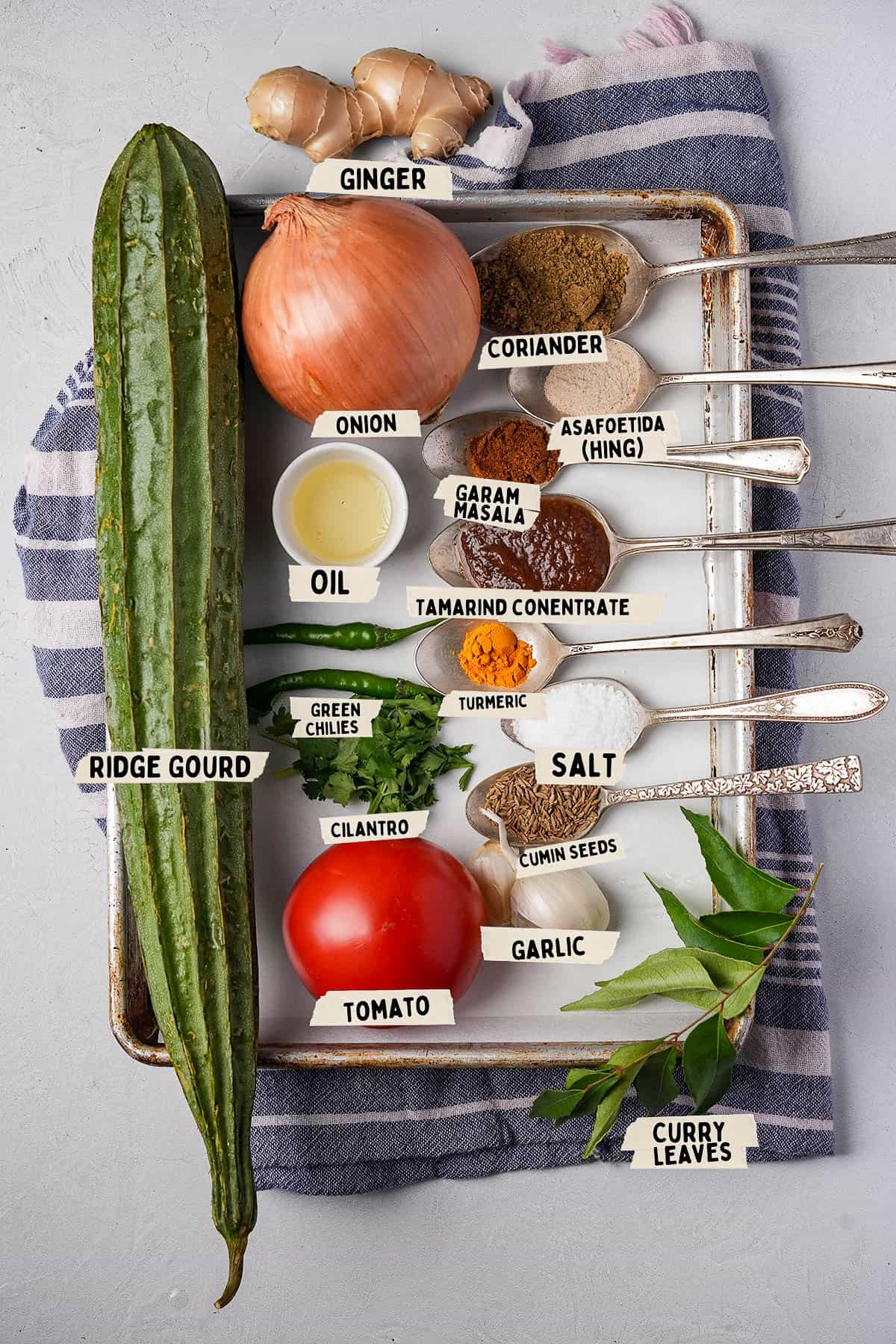
Ridge Gourd
Ridge gourd is known as Turai in Hindi, Jhinge in Bengali, Beerakaya in Telugu and Peerkangai in Tamil. It’s a low-calorie vegetable packed with dietary fiber, vitamins, and minerals.
If you can’t find any, this recipe can also be made nicely with ash gourd (like you would use for olan), bottle gourd (like you would use for making Lauki sabji), or even a sorta large number of parwal (what I normally make as an ekedasi sabji). Zucchini can also work, but it will need a shorter cooking time.
Asafetida
Asafetida, or “Hing” in Hindi, is a pungent and aromatic spice often used in Indian cuisine in everything from masoor dal to masala phool makhana. It adds a unique umami flavor to the dish and aids in digestion. Be cautious, as a little goes a long way. Substitution: garlic powder or onion powder can provide a similar vibe.
Kashmiri Red Chili Powder
Look, you can get away with a mixture of paprika and cayenne, but this vibrant red spice, originating from Kashmir, imparts a very special flavor and a deep red color to famous curries like rajma chawal and aloo gobi.
It’s less fiery than regular chili powder but still adds a beautiful kick. Just get some if you don’t have it because it’s an amazing spice to have on hand for sprinkling on Amritsari Kulcha, or using to make pickle masala.
Tamarind Concentrate
Tamarind concentrate adds a tangy and slightly sweet, almost sour-cherry-like note to the curry. It’s a crucial element for achieving the distinct flavor profile of Turai Sabzi. Nutritionally, tamarind is rich in antioxidants and vitamins. If you can’t find tamarind concentrate, use lemon juice mixed with brown sugar to replicate the sweet-tangy balance.
Cumin Seeds
Cumin seeds are essential to nail the flavor or turai sabzi. I’ve tried about a zillion different cumin seeds from all around the world, and by a LONG SHOT the slender, cray-fragrant wild cumin seeds from Burlap and Barrel are my fave.
I use 'em in my arvi sabjji recipe, my toor dal tadka, and in condiments like tamarind chutney, and even non-Indian recipes like red curry paste and salsa verde.
Anyway, if you can’t get those wild mountain cumin seeds, you can 100% get away with using plain, boring ol’ cumin seeds, or a little more than half the amount of ground cumin in their place.

Get my fave cumin seeds for free!
Using this link, add the wild mountain cumin to your cart, spend at least $15 on some of the other absurdly good spices from Burlap & Barrel (they all seriously slap) and the bottle of this bangin' wild mountain cumin becomes FREE, and you will love it so much.

*See the recipe card at the bottom of the page for exact quantities, nutritional info, and detailed cooking directions.
🤯Variations
🥥With coconut
For a creamy vibe, simply replace the water in the recipe with coconut milk, and garnish the dish with tamarind seasoned toasted coconut as I do in my urap sayur recipe.
🪷 Sattvic ridge gourd
Simply leave out the onions and garlic from the recipe, and add a small amount of extra asafetida, and then the dish becomes suitable to offer as bhoga. Sattvic food makes the best prasadam! Providing that your asafetida has no wheat starch (many brands add it as an anti-caking agent), it’s also suitable for ekadasi vrata.
📖 How to make this turai recipe
Nail this dish on your first shot by following these step-by-step instructions with important tips. Or you can follow along with the easy-to-print recipe card towards the bottom of this page.
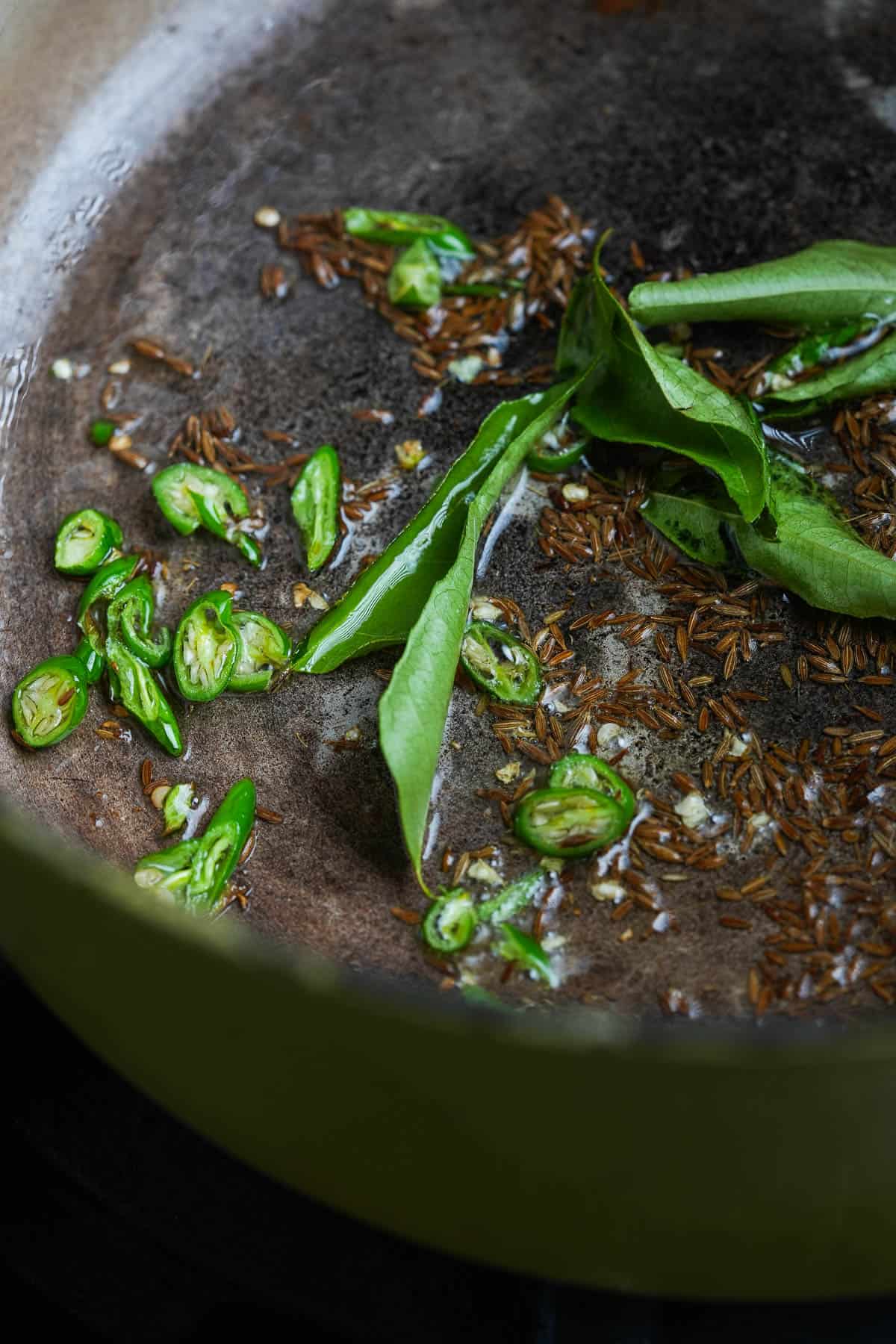
Step One
Heat Oil and Spices: Heat oil in a large pan over medium heat. Add cumin seeds, curry leaves, and green chilies. Cook for 30-60 seconds until you hear the seeds sputtering.
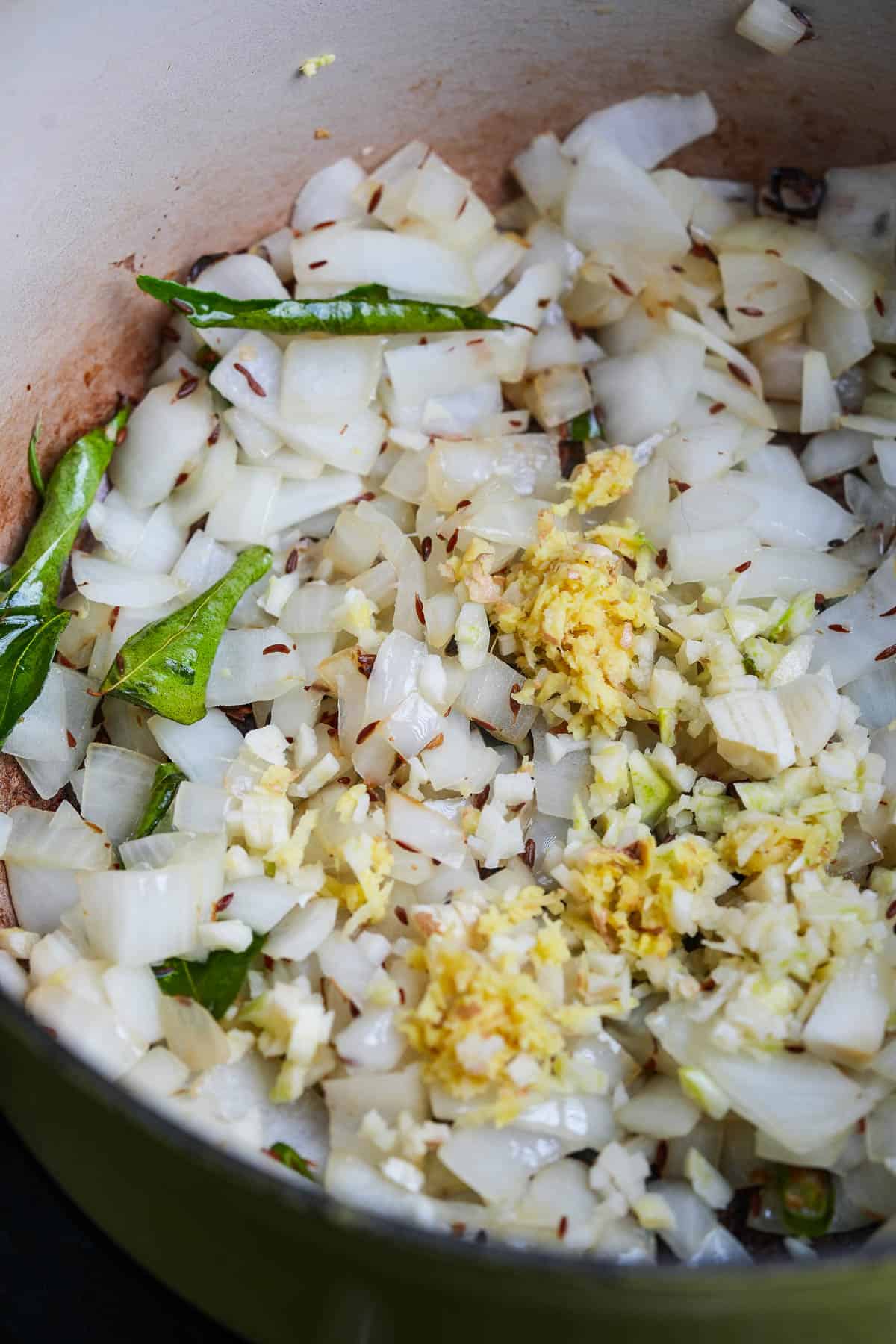
Step Two
Sauté Aromatics: Sauté onions until translucent, then add garlic and ginger for 1 minute.
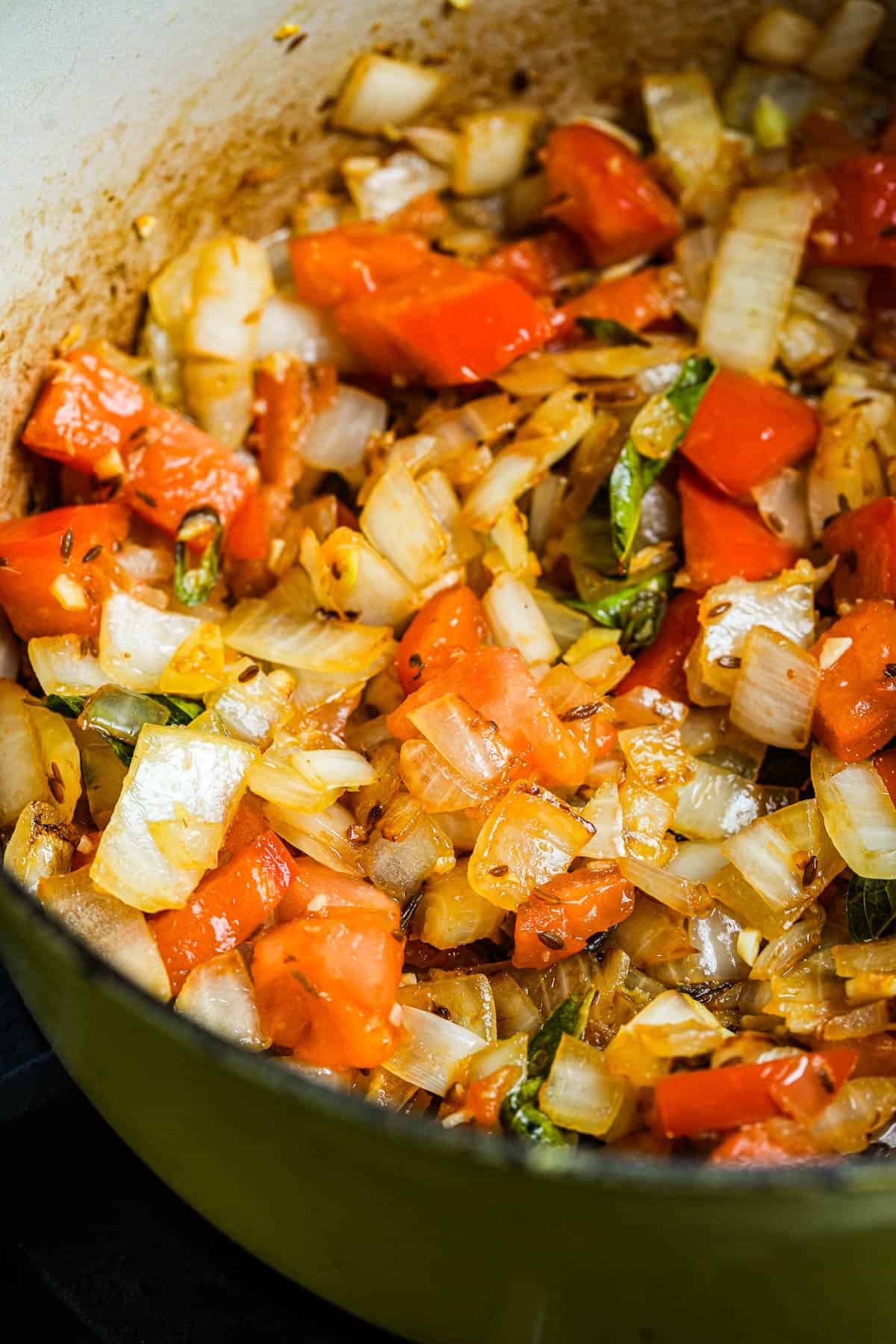
Step Three
Tomatoes: Stir in diced tomatoes and cook for 6 minutes.

Step Four
Oh my Gourd: Add ridge gourd, turmeric, coriander, chili powder, asafetida, and garam masala. Sauté for 3 minutes until the spices are fragrant and well incorporated.

Step Five
Add Liquid and Tamarind: Pour in water and tamarind concentrate. Season with salt. Stir well. Reduce heat, cover, and simmer for 10-12 minutes until ridge gourd is tender but not mushy.
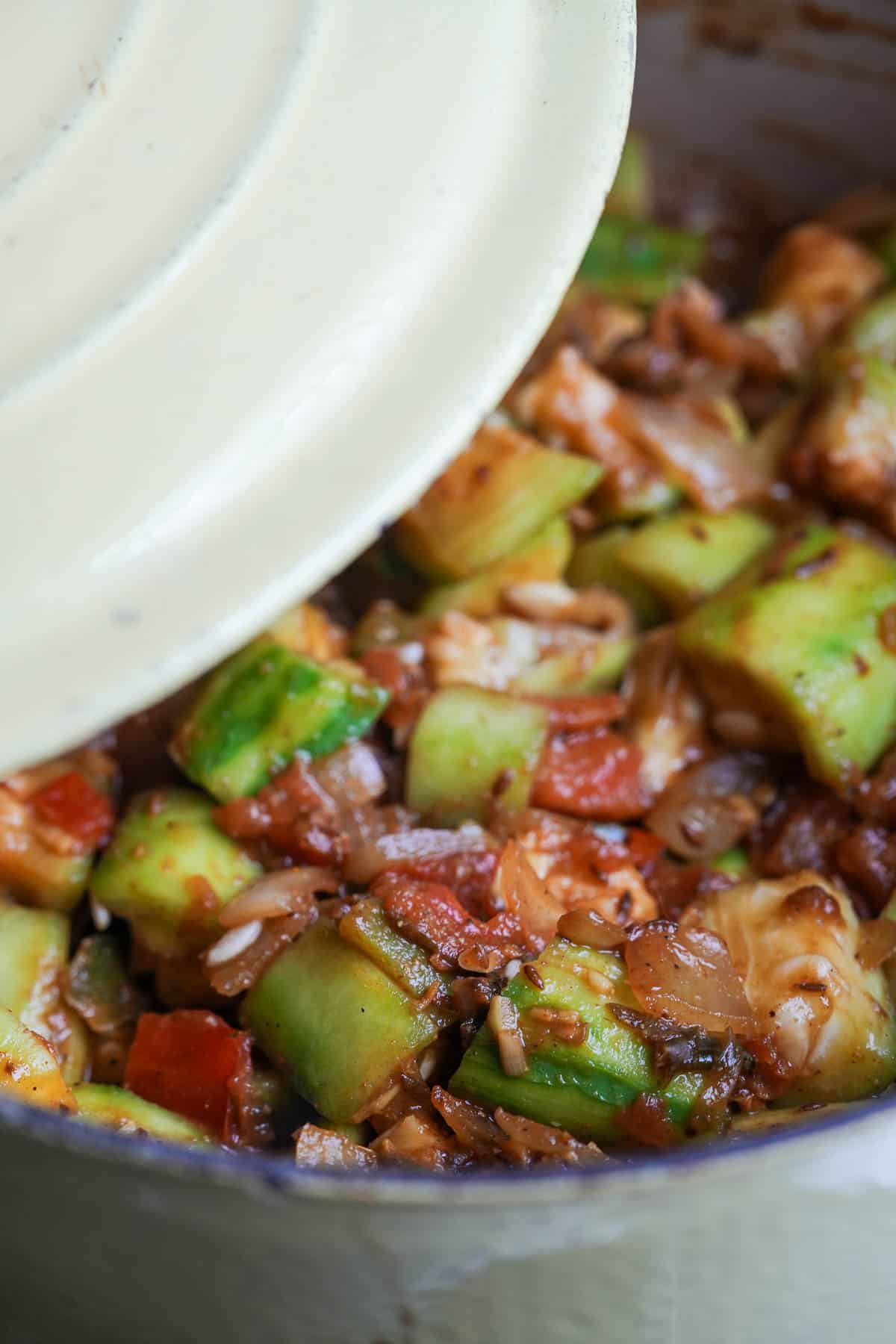
Step Six
Simmer and Serve: Reduce heat, cover, and simmer for 8-10 minutes until ridge gourd is tender but not mushy. Transfer to a dish, garnish with chopped coriander leaves (cilantro), and enjoy the heck outta your Turai ki Sabji, maybe with your fave fermented chili sauce or some pickled green chilies if you want some extra heat.
💡What to serve with this gourd curry
Serving Turai ki Sabji is 100% about creating a nourishing, well-rounded Indian meal. This flavorful dish pairs beautifully with a variety of classic Indian accompaniments, making for a nourishing, flavor-packed meal.
Turai ki Sabji over rice is a no-brainer. The fragrant spices of the curry drip into aromatic basmati pilau or turmeric rice like nothing else does!
And if you are making rice, you know you HAVE to (it’s a law ok?) make some dal to go with it. Whether it’s arhar dal tadka, or chana dal, the creamy lentil goodness provides a protein-packed element that balances the flavors and textures of the meal.
Make it into a proper thali with other North and South Indian sabjis like saag aloo, Chana Masala, Punjabi dry bhindi, or 100% vegan butter chicken made from succulent homemade seitan. Scoop ’em up with flaky, layered parotta, and your fave pickles like gajar ka achar, or amla achar.
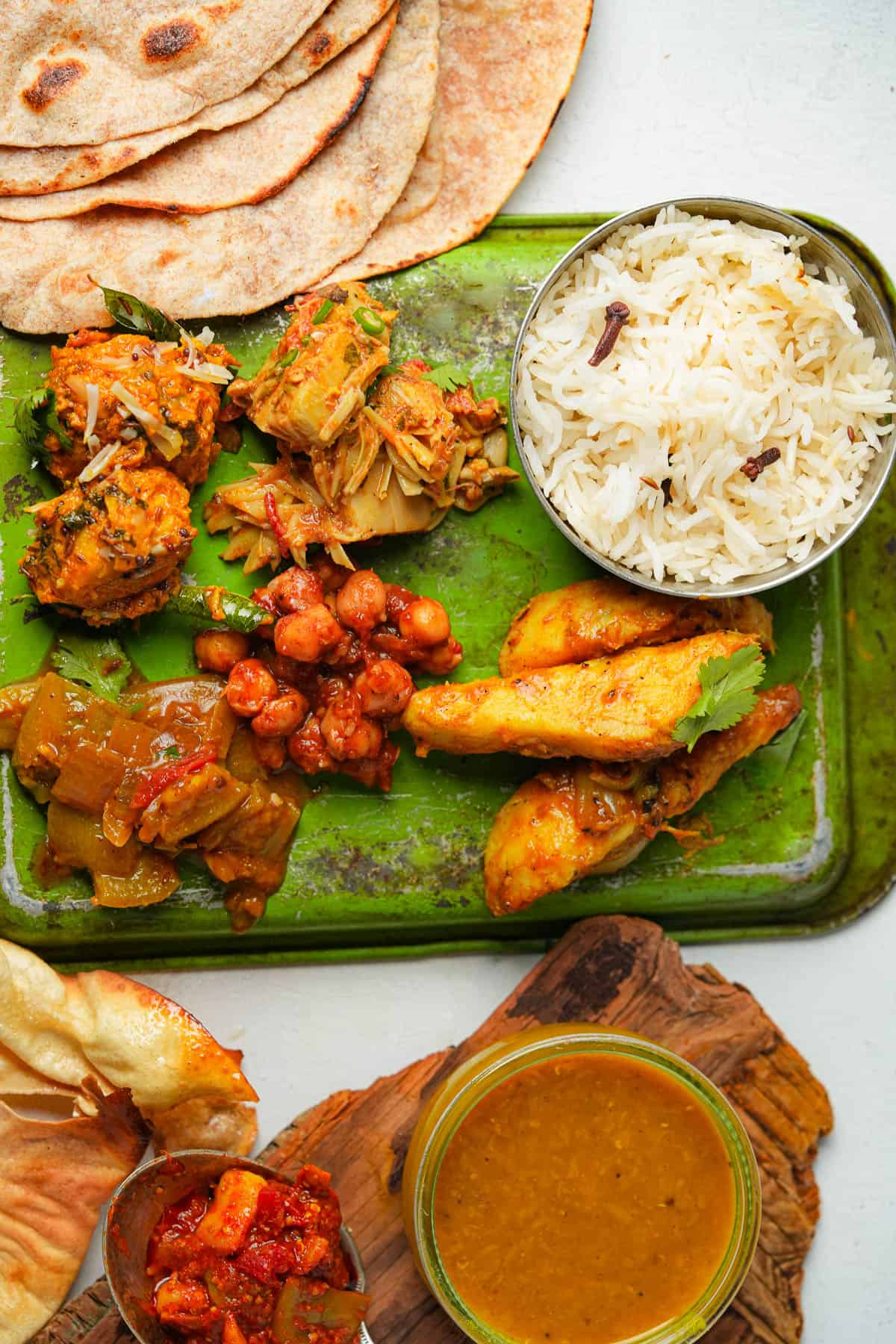
👉Top tips
- Even Heat Distribution: Use a thick-bottomed pan to ensure even heat distribution. This helps prevent burning and ensures that the spices and vegetables cook uniformly. I love using a Dutch oven.
- Cover While Simmering: When simmering the curry, cover the pan with a lid. This traps the steam, allowing the ridge gourd to cook evenly and retain its texture without the fragrance escaping into thin air.
- DON’T OVERCOOK: This is kinda the key with turai. If you are unaccustomed to cooking gourds, think of it like you would think about cooking zucchini or summer squash. Don’t cook it to death!
🤷♀️FAQ
You can substitute with ash gourd, bottle gourd, or even zucchini if ridge gourd is unavailable.
Tamarind concentrate is more convenient and consistent to work with, which is why I opt for it to make my imli chutney. But tamarind pulp can be used; just soak it in warm water and extract the pulp. Discard any seeds that might be present.
🥶Chill out: To store Turai ki Sabji, transfer it to an airtight container and place it in the refrigerator. Ensure it’s stored within 2 hours of cooking. Consume within four days for the best quality.
🔥Stovetop reheating:
Take out the container from the refrigerator and let it sit at room temperature for a few minutes.
In a saucepan, heat a small amount of oil over medium-low heat.
Add the leftover Turai ki Sabji to the pan.
Stir occasionally, ensuring even heating, until it reaches the desired temperature. Garnish the reheated dish with fresh cilantro leaves.
☢️ Microwave reheating:
Transfer the desired portion of Turai ki Sabji to a microwave-safe dish.
Cover the dish with a microwave-safe lid or microwave-safe plate.
Heat on medium power (50-70%) for 1-2 minutes, depending on your microwave’s power and the quantity of the dish.
Stir the curry and heat for an additional 1-2 minutes, checking until it’s thoroughly warmed.
Carefully remove from the microwave and serve.
Avoid freezing this ridge gourd recipe, as the texture of the ridge gourd will become limp and lifeless upon thawing.
✌️My faves to serve with this recipe:

Turai Sabzi (Gujarati Ridge Gourd Curry)
Equipment
- Lid for covering the pan
Ingredients
- 4 teaspoons Oil
- 1 teaspoon Cumin seeds (Jeera)
- 12 curry leaves
- 2 green chilies (hari mirch), thinly sliced
- 1 cup onion diced
- 2 garlic cloves minced
- 1 teaspoon grated ginger
- 1 ½ cup tomato diced
- 5 cups Ridge Gourd (Turai/ Peerkangai) peeled and diced 1 inch (2.5 cm.)
- ¼ teaspoon Turmeric powder
- 2 teaspoons Coriander powder
- 1 teaspoon Kashmiri red chili powder
- ½ teaspoon asafetida (Hing)
- ½ teaspoon Garam Masala
- ⅓ cup Water
- 1 tablespoon tamarind concentrate
- 1 teaspoon Salt
- Cilantro chopped coriander leaves to garnish
Instructions
- Heat oil in a large, heavy-bottomed pan over medium heat, add cumin seeds, and let them sizzle for a moment. Then add curry leaves and thinly sliced green chilies, stirring for about 30 seconds to release their aroma.
- Sauté diced onions until they turn translucent, then stir in minced garlic and grated ginger and cook for an additional minute until fragrant.
- Add diced tomatoes to the pan. Cook and stir for 6 minutes until they soften and break down slightly.
- Stir in the peeled and diced ridge gourd (Turai) along with the turmeric, coriander, chili powder, asafetida, and garam masala.
- After sautéing for 3 minutes, when the spices are fragrant and well incorporated, pour in the water and tamarind concentrate, season with salt to taste, and stir well to combine all the ingredients.
- Reduce the heat to low, cover the pan, and let it simmer for about 8-10 minutes until the ridge gourd becomes just fork-tender but not overly soft.
- Once the ridge gourd is cooked, serve the sabji in an attractive serving dish and garnish with fresh cilantro leaves.
Notes
Follow steps 1 to 5 using the "Sauté" function, then add water, tamarind concentrate, and salt. Cook on "Manual" or "Pressure Cook" mode for 5 minutes with a 5-minute natural pressure release. Note for Pressure Cooker:
Follow steps 1 to 5, add water, tamarind concentrate, and salt, then cook for 1 whistle on medium heat and simmer for an additional 2-3 minutes before garnishing with cilantro.

Enter your email & I'll send it to your inbox. Plus, get great new recipes from me every week!
By submitting this form, you consent to receive emails from Cinnamon Snail.

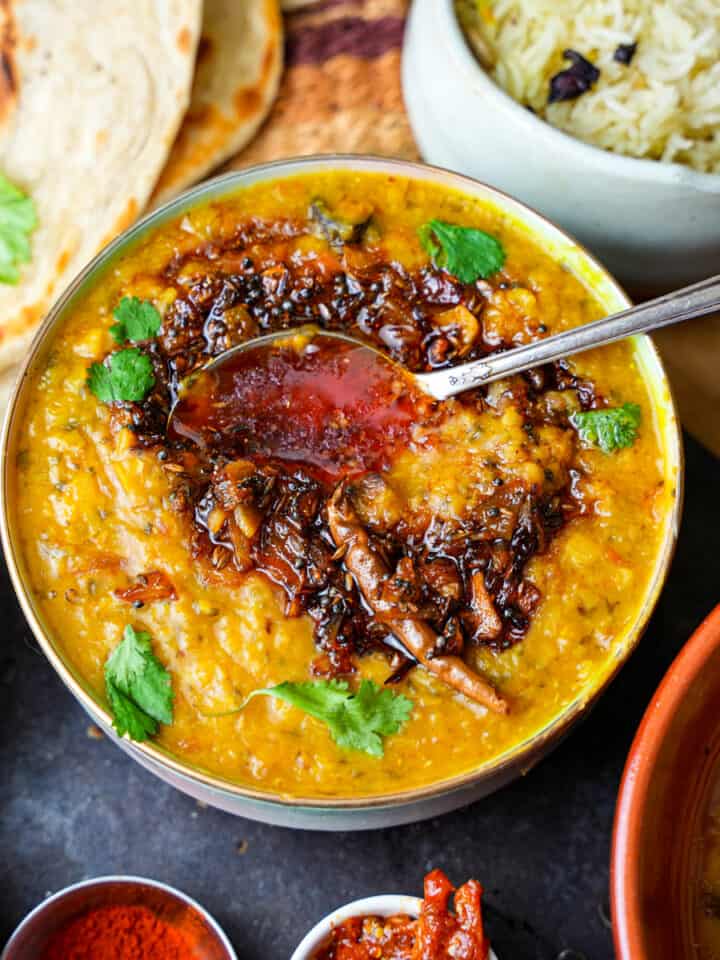

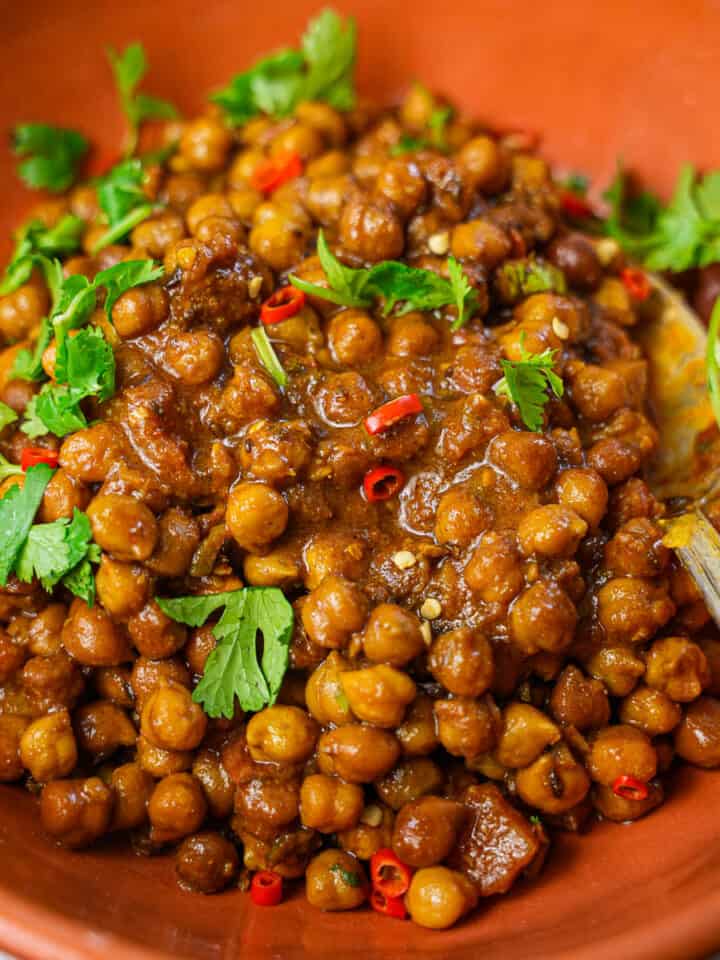







Nivedita says
Good recipe! I subbed dried tamarind (soaked and extracted pulp) for the concentrate. I misjudged the amount and then added a little jaggery to balance the too sour notes.
Leagle says
came across some lovely turai & made this on a whim tacked onto another meal. amazing. the sourness. the varying textures of the gourd, can feel the real. will def make again (& again) but as the centerpiece.